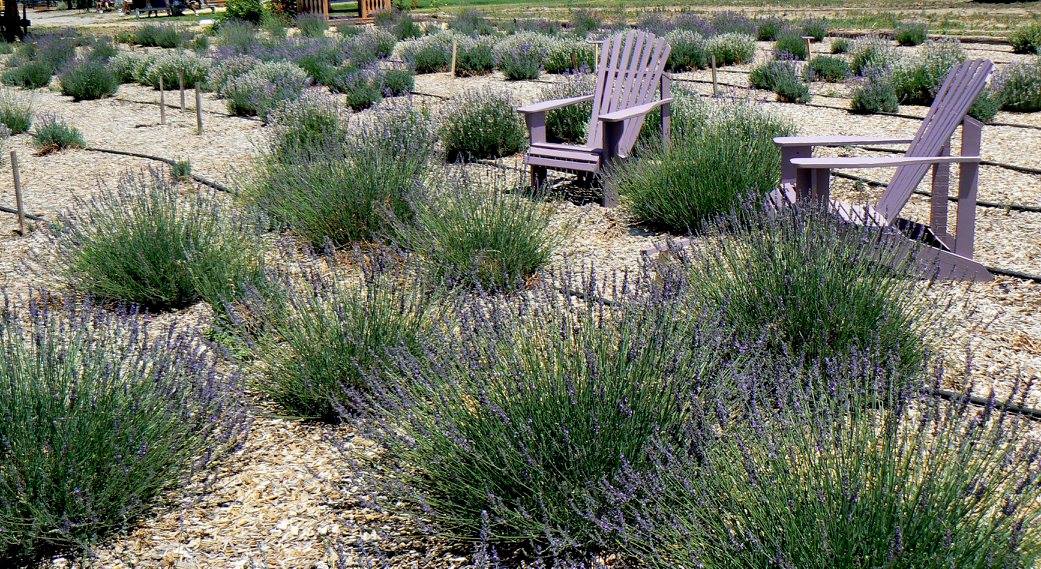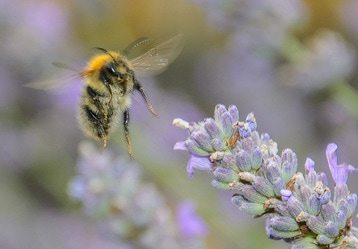
- info@coloradolavender.org
Your Cart
100% Secure Checkout!
No products in the cart.

I visited an organic lavender farm last summer. About a half-mile down the road I knew I was close, as I could smell the fragrance wafting through the air. The rolling hillside was full of stunning, silvery-green and purple lavender plants. While I’ve never been to France, I imagined this is what the French countryside must look and smell like. I felt immediately transported to a peaceful place. How much was linked to the actual aromatic effects of lavender or the natural beauty of it in this lovely environment, I’ll never know. Either way, it was a memorable experience.
It’s not as hard as you might think to experience the beauty and healing properties of lavender by growing fresh lavender for use in food, body care and more. Lavender is easy to grow in pots or outside in your garden.
Lavender has been used for at least 2,500 years, when it was applied in mummification and perfume-making by the ancient Egyptians, Phoenicians and Arabs. Ancient Romans are also believed to have used lavender for cooking, bathing and scenting the air. In Roman times, a pound of lavender flowers sold for the equivalent of a farm laborer’s monthly wages. The flowers were used to infuse water in Roman baths, which lead to the modern name for lavender (the Latin word lavare means “to wash”). In Medieval Europe, lavender was thrown on the stone floors of castles to help disinfect and deodorize them.
Many lavender varieties range from 1 to 2 feet tall and form mounds of silver-green foliage topped with purple flowers when in bloom. The plants are simple to grow and require minimal care, making them ideal for the lazy or novice gardener. Shorter varieties make great edging along walkways, while taller kinds make beautiful hedges.
Lavender is a perennial plant that grows best in a sunny location with well-drained soil. In places where winters are wet, it may not survive the winter and should be treated as an annual. Pay attention to the spacing recommendations on the plant’s tag when purchasing lavender plants, as some varieties can grow more than a few feet in diameter. You can also grow lavender from seed either indoors in pots or outdoors by sprinkling the seeds over the ground. While it’s not necessary to cover the seeds with soil, a dusting of earth to cover them helps prevent birds from eating the seeds. Lavender hates being over watered: It needs watering to get started but only infrequent watering after the plant takes hold—even during hot weather. Water once or twice a week unless you’re in a hot, dry climate, then you can water slightly more frequently.
To harvest, wait until the plant blooms and cut about one-third of the way down the stems, leaving some of the stems on the plant. Place cut stems in water in a vase or pitcher to give the air a fresh, sweet smell. They last about a week. To dry lavender, tie 1-inch bundles of stems together with elastic bands and hang upside down until dry. You may want to place a clean cloth or large bowl beneath them during drying to catch some of the flowers, as some will fall.
• Tea to alleviate anxiety and depression: In a recent study comparing the effects of medication for depression to drinking tea made from lavender flowers, scientists found that the lavender was slightly more effective than the antidepressant medication. The researchers conclude that lavender might be used as an adjunct to antidepressant drugs or on its own to assist with symptoms of depression. Study participants drank two cups of an infusion made with lavender daily. To make lavender tea: Add 2 teaspoons dried flowers to boiled water and let sit for 10 minutes. Strain and drink. Of course, never discontinue any medications without consulting your physician. Always seek medical advice for severe depression.
• Insomnia remedy: According to James Duke, botanist and author of The Green Pharmacy, lavender is an excellent insomnia remedy. He recounts stories of British hospitals using lavender essential oil in patients’ baths or sprinkled onto bed clothes to help them sleep. To use in a bath, sprinkle 5 to 10 drops of lavender essential oil under the running water as the tub fills. Alternatively, place a heaping tablespoon of dried lavender flowers in cheesecloth, tie into a bundle and allow to infuse in bathwater while soaking.
• Easy and effective insect repellent: In a study comparing the effects of lavender essential oil with DEET-based tick repellents, lavender showed comparable results to DEET sprays. At a 5 percent concentration, the insect-repellent results of lavender oil lasted 40 minutes, while at a 10 percent or higher concentration of the essential oil, results lasted for two hours. Add 10 to 20 drops of lavender essential oil to your favorite unscented lotion and apply before heading outdoors. Better yet, make your own Skin-Soothing Lavender Body Lotion with the recipe at right.
• PMS relief: A study published in the journal BioPsychoSocial Medicine found that inhaling the scent of lavender for 10 minutes had a significant effect on the nervous system of women suffering from premenstrual symptoms. It especially decreased feelings of depression and confusion. To alleviate mood-related PMS symptoms, place a few drops of lavender essential oil on a handkerchief and inhale periodically, make a tea from dried flowers as described above, or breathe deeply of a plant growing indoors or outdoors.